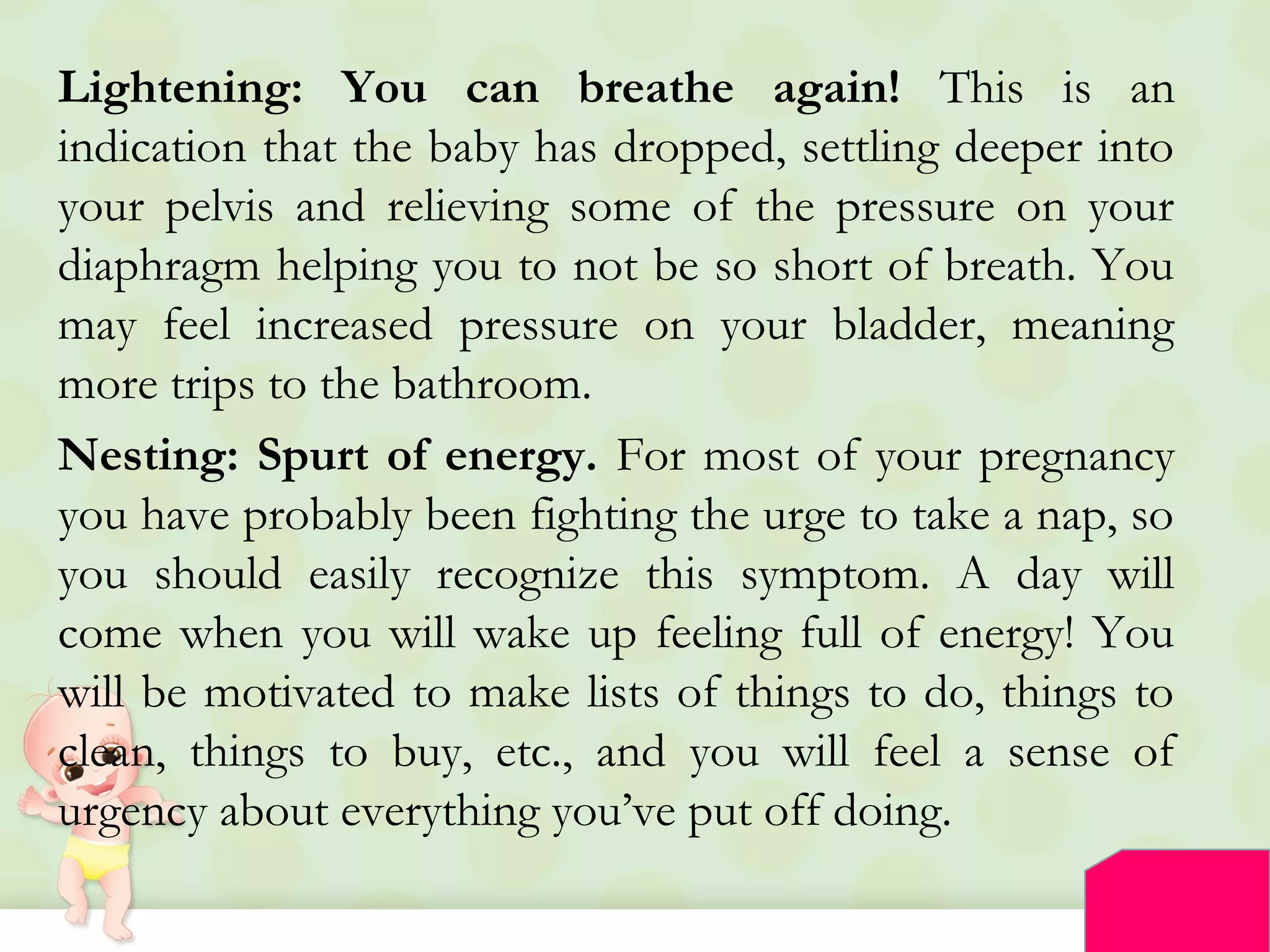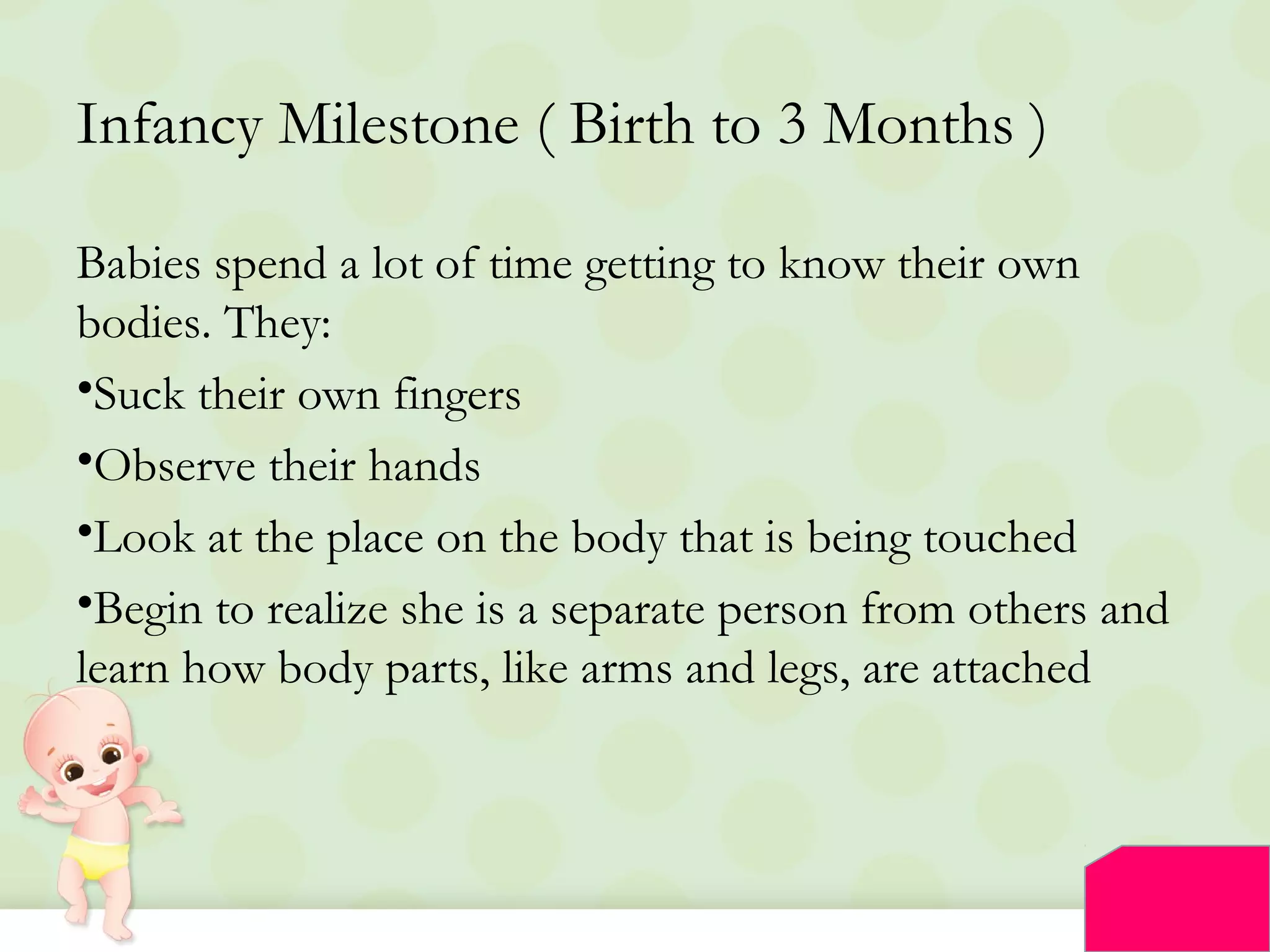The document outlines physical, cognitive, emotional, and social milestones from infancy through toddlerhood, including the development of reflexes in infancy and the achievement of walking and language skills in babyhood. It also discusses types of birth including normal, breech, and c-section births. Parenting styles such as authoritarian, authoritative, permissive, and uninvolved are defined in the context of toddler development.





























































